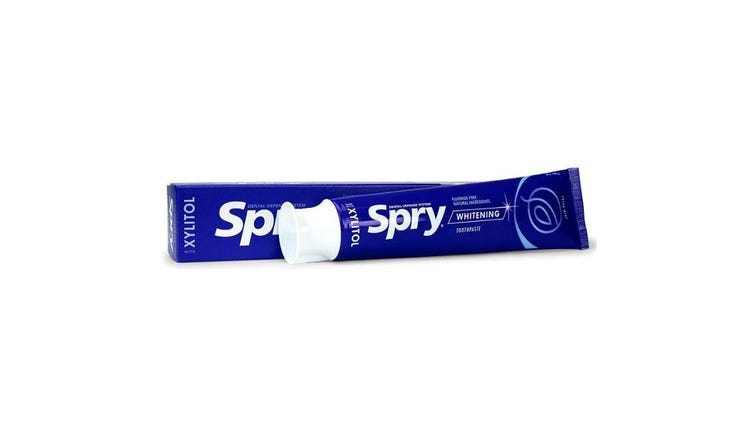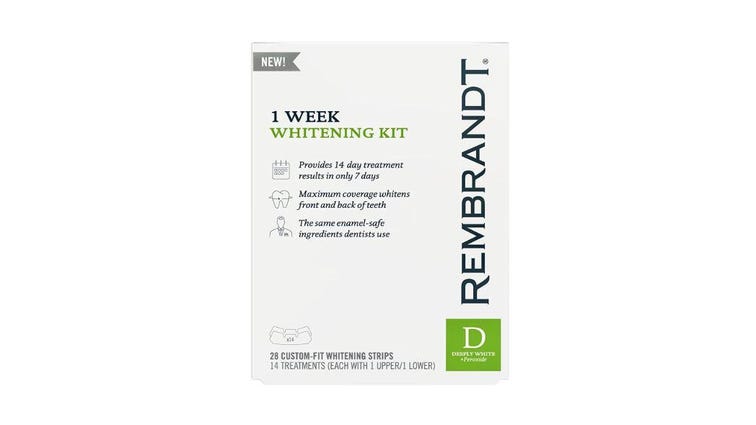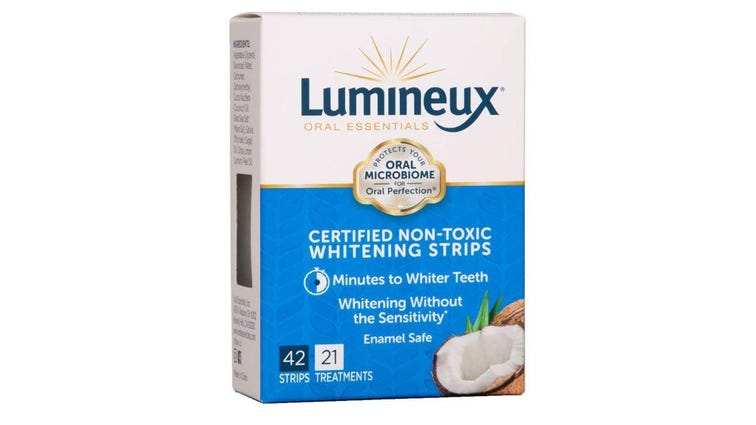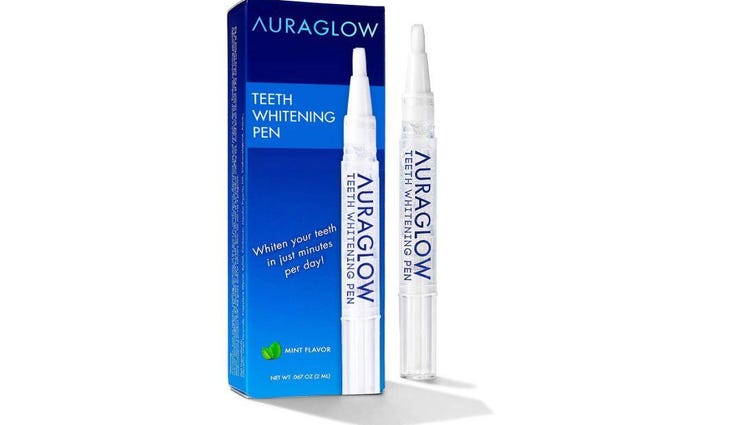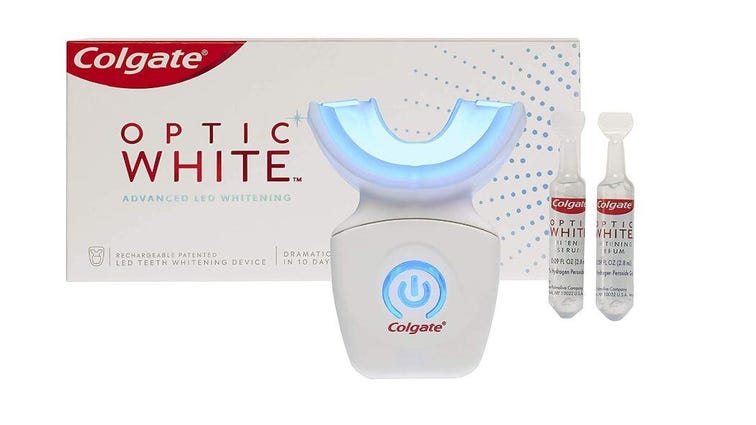
When it comes to having a healthy smile, there's more to it than just going to regular dentist appointments. As someone who drinks coffee daily -- and red wine once or twice a week -- that means I need an effective teeth-whitening product on hand to keep my smile bright.
While there's no shortage of tooth-whitening products on the market, I have sensitive gums (more on that in my roundup of the best electric toothbrushes for 2022), so for me, a good tooth-whitening product is one that's effective but doesn't sear my gum tissue. Also, as far as I'm concerned, a good whitening product makes my teeth look natural -- none of that so-white-it-hurts nonsense.
I know not everyone has tooth sensitivity or crybaby gums like me, so while in a perfect world I would only test gentle products to avoid gum irritation, I white-knuckled through some intense hydrogen peroxide bleaching concentrations to find the best teeth-whitening products for 2022. In the name of reporting, right? We'll update this periodically.
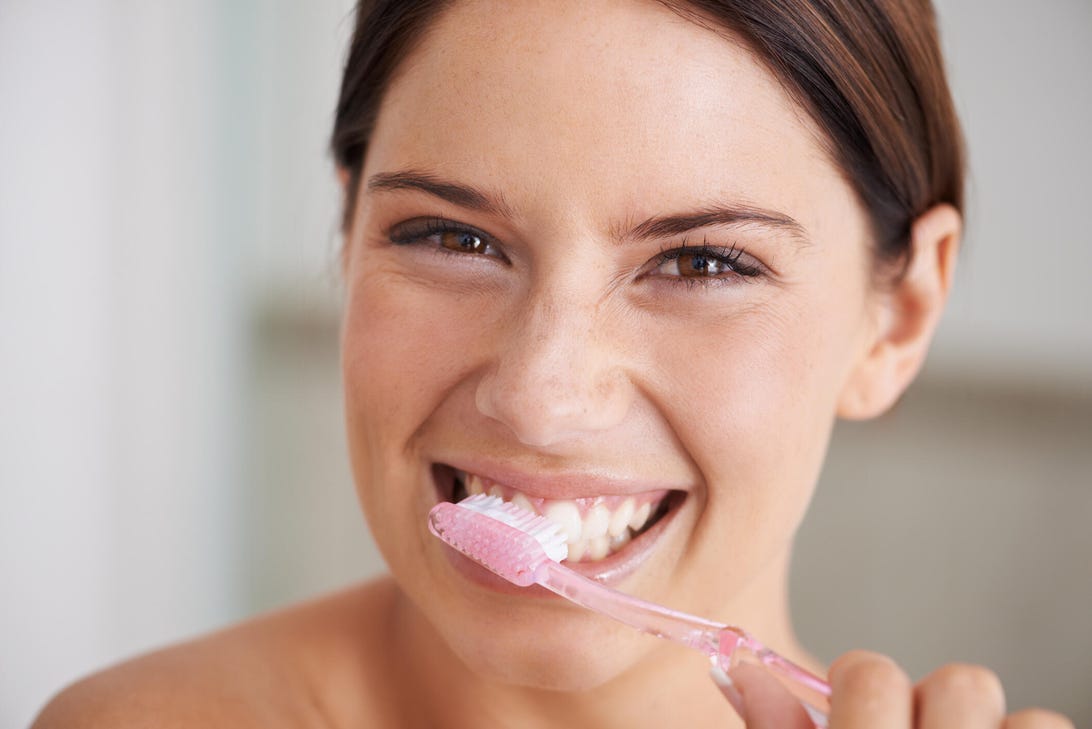
A tooth-whitening agent can come in many forms: toothpaste, strips, LED light, gel tray and even a pen.
PeopleImages/Getty ImagesHow I chose these teeth-whitening products
I began with a long list of whitening products that could potentially make it into this roundup, looking at things like brand reputation, buyer reviews on Amazon and full reviews by other writers. After narrowing the big bad list of teeth-whitening products down to about 20 options, I started testing.
Because it would be impossible to test the long-term efficacy of all of these whitening products without annihilating my enamel and gum tissue (or working on this project for literal years, because I wouldn't be able to adequately judge how much whiter each of them made my teeth by using them back to back), I judged each product against a few criteria that I think will help you make a buying decision.
Here's a quick rundown:
- Whitening toothpaste: Judged on taste, texture, ingredients, residue and general mouthfeel
- Whitening strips: Judged on fit, coverage (how many teeth it covers), ease of use, sensations (such as burning gums) and length of wear
- LED whitening lights: Judged the same way as whitening strips
- Whitening pens: Judged mainly on ease of use and how well the gel stays put on teeth, but also sensations if some of the gel got on my gums
Look, I tested a lot of teeth-whitening toothpastes: Arm & Hammer Advance White Extreme Whitening Toothpaste, Supersmile Professional Teeth Whitening Toothpaste, Crest 3D White Toothpaste, Native Whitening Wild Mint & Peppermint Oil Fluoride Toothpaste and Colgate Optic White Whitening Toothpaste.
In my opinion, none of them were awful, but none was nearly as great as Spry All Natural Whitening Toothpaste. Remember, I was only judging on taste, texture, ingredients, residue and general mouthfeel, so I'm not speaking to the long-term results of Spry's whitening toothpaste (the brand claims it removes surface stains from coffee, tea and soda) -- but to me, a toothpaste that feels and tastes good is going to give you the best results because you'll actually use it consistently.
As for product specs, Spry All Natural Whitening toothpaste contains sodium bicarbonate (baking soda) as its main teeth-whitening ingredient. Many brands use this, and many use hydrogen peroxide to whiten teeth, which is harsher, but may produce better results -- but my opinion is that toothpastes with hydrogen peroxide don't taste good.
Spry uses both xylitol and erythritol, two sugar alcohols, as sweeteners. It also contains stevia. This combination of sweeteners may be one reason why Spry whitening toothpaste tastes better than its competitors. Again, to be fair, none of the other toothpastes I tested was strikingly bad.
For your own research, here are the main reasons I chose Spry All Natural Whitening Toothpaste over the others:
- Arm & Hammer Advance White Extreme Whitening Toothpaste felt liquidy yet grainy and left a residue I wasn't fond of on my gums and tongue. This wore off after just a few moments, but I kind of felt like a dog licking his chops after eating peanut butter for those few moments.
- Supersmile Professional Teeth Whitening Toothpaste would be my runner-up pick after Spry. It was just as great in most ways, but didn't taste quite as good. I feel comfortable recommending this whitening toothpaste as one of the best.
- Crest 3D White Toothpaste has never been a favorite of mine. I've used it many times over the years and always find it to be too sticky-feeling. However, I do know many people who are loyal to this toothpaste and also have pretty great teeth, so this isn't to say it's a bad whitening toothpaste.
- Native Whitening Wild Mint & Peppermint Oil Fluoride Toothpaste reminded me of attempts to make healthy versions of classic desserts. They always turn out crumbly and bad. Maybe it's because Native uses "hydrated silica" instead of baking soda or hydrogen peroxide. I don't know; I'm not an expert on teeth-whitening compounds. But I do know this toothpaste tasted strange.
- Colgate Optic White Whitening Toothpaste gave me the opposite experience to Native: Instead of tasting too natural or healthified, it tasted clearly chemical. It is 3% hydrogen peroxide, so perhaps that's the culprit. I would recommend Colgate Optic White toothpaste only to someone who's looking for a heavy-duty whitening toothpaste.
As with the whitening toothpastes, I tested a fair amount of home tooth-whitening strips. Rembrandt whitening strips were my favorite for a number of reasons, which I'll discuss first, and then I'll go into why I didn't pick the others I tested.
The Rembrandt website describes the whitening strips as having "maximum coverage to whiten the front and back of teeth" and that's no lie: The width of these whitening strips is impressive, as is the length. They stretched far past my canines on both top and bottom, and the strip fully folded over to cover the backs of my teeth. The strips also have little divots that prevent any air bubbles or uneven coverage.
Rembrandt's whitening strips are also much thicker than those of most other brands, which I think prevents them from sliding around while you're wearing them. That's my experience, at least. The hydrogen peroxide gel on the strips also seems to be thicker than that of other brands and that helps with the stickiness, too.
One other big reason I loved these Rembrandt whitening strips: You wear them twice a day for seven days, rather than once a day for two weeks or once a day for a month. I've almost never successfully made it through a 14-day or 30-day pack of whitening strips. But one week? I can definitely manage that.
Here are the other whitening strips I tested and why they didn't take the cake for this category:
- Crest 3D Whitestrips are truly a classic. They're easy to find and easy to use, and I've used them many times in the past -- it had been years since I used them, so I decided to give them another try for this article. I didn't choose this teeth-whitening option as the best for a sole reason: The coverage kind of blows! Especially compared with the Rembrandt strips, Crest 3D Whitestrips just don't offer great tooth coverage. I find they cover the minimum and that's it -- they just barely reach over my canines and they tend to shift a lot because they're thin and don't wrap around the back side of my teeth.
- Lumineux Oral Essentials Certified Non-Toxic Whitening Strips actually did make the list because they deserved a callout of their own. See the next category, best whitening strips for sensitive teeth, below.
- Fairywill Teeth Whitening Strips were fine in terms of coverage. They completely covered my canines on top and bottom, and were wide enough that they folded over the entire back sides of my teeth. This whitening-strip option stuck well and didn't shift around. But the taste was weird and the leftover residue was sticky and persistent. With other whitening strips, I can get away with a quick swish of water, but with these, I had to fully brush my teeth to get rid of the residue.
As I mentioned, Lumineux Oral Essentials whitening strips deserve their own section. I still give Rembrandt first place in the whitening strips category overall, but anyone who has sensitive teeth should check out Lumineux. Of all the whitening strips I tested, these were the only ones that didn't leave little white spots on my gums.
After some research, I discovered that those little white spots are chemical burns from the ingredients in whitening products -- usually hydrogen peroxide. Lumineux products don't include hydrogen peroxide and instead use a combination of dead sea salt, essential oils, coconut oil and aloe vera. Despite the natural combo of ingredients, Lumineux whitening strips didn't give off "trying too hard" vibes like the Native natural whitening toothpaste did. The fit and coverage were great, although they did slip around a bit.
I tested these for three consecutive days, so I can't speak to the long-term efficacy compared with other brands, but Lumineux did conduct a clinical trial that concluded Crest 3D Whitestrips were no more effective than Lumineux natural whitening strips. The study was, of course, funded in part by Lumineux, so keep that in mind. Still, I think they're worth a shot for people with sensitive teeth and gums.
I'd have to try the Lumineux strips for longer -- i.e., finish the entire box without using any other products intermittently -- to see if they work as well as products I used in the past. I'm all for natural alternatives to cosmetic products, but expectedly, all-natural products sometimes don't work as well as conventional ones.
I have to hand it to Auraglow for this teeth-whitening pen. Despite the sensitivity I felt from its LED whitening trays, I love this whitening pen -- probably because I have more control over where the gel goes and can keep it from touching my gums.
I also like the Auraglow whitening pen because it's a quick and simple teeth-whitening product: Just make sure your teeth are clean, smile wide, apply the gel and you're done. You may want to keep smiling for a minute or two to ensure the gel dries and doesn't smear. This is a teeth-whitening tactic you can employ after you brush your teeth in the morning or at night. After about 60 seconds, the gel dries and you can be on your way to whiter teeth -- no need to rinse.
I also tested the Colgate Optic White Teeth Whitening Pen, the new Crest Whitening Emulsions with a built-in applicator and the Dr. Brite Teeth Whitening Pen. Here's why Auraglow is my favorite:
- The Colgate Optic White Teeth Whitening Pen is intended for overnight use. Everything about this product was fine (such as brush size and sensitivity) except the whitening gel felt too sticky. I tried it before bed three times and each time I ended up getting out of bed to brush it off because I felt as if it was sticking to my lips when I closed my mouth
- I mostly enjoyed the Crest Whitening Emulsions, particularly because it's such a convenient product. The whitening gel comes in a small tube with a built-in applicator, and you can apply the product directly to your teeth without the need for brushing or rinsing, just like the Auraglow whitening pen. However, I felt like I couldn't get an even coating on my teeth and was worried about splotchiness.
- I like that the Dr. Brite Teeth Whitening Pen consists of all-natural ingredients with zero hydrogen peroxide. This makes it a great choice for people with sensitive teeth and gums. However, the actual brush head on this whitening pen was way too big for my teeth. I wasn't able to brush on the whitening gel without getting it on my gums. I wouldn't recommend this pen to anyone who wants to spot-treat their teeth, because it's almost impossible not to cover more than one tooth at a time.
I know I bashed Colgate's Optic White Whitening Toothpaste above, but that's because I was judging toothpaste largely on taste and texture. The LED light trays, on the other hand, I tested based on fit, coverage, ease of use, sensations and length of wear.
The Colgate Optic White Advanced LED Whitening kit far surpassed the few others I tested for this category. The instructions for this whitening method were easy to understand, the mouthpiece fit well (even for me, and I have a tiny mouth), the gel covered all the teeth it was supposed to, I didn't experience too much sensitivity and you only have to wear it for 10 minutes.
Truly, the only downfall was that the device requires charging before your first use and in between uses, which is kind of a hassle. That's a small price to pay for a teeth-whitening kit with so many other great features, though.
I used the Colgate Optic White Advanced LED Whitening kit once a day for 10 minutes for three days and noticed an improvement in whiteness despite forgoing the full treatment (it's designed for 10 days of use, but again, I couldn't test all of these products for the full intended treatment without potential dental complications).
Here's why I didn't choose the other LED trays I tested:
- The Shyn Teeth Whitening System includes an LED light mouthpiece that Shyn claims speeds up the whitening process, as well as four whitening pens. This is a good kit except for one thing: The mouthpiece has a cord and must be plugged in during use. That makes it hard to use those 30 minutes for something productive, like sweeping the floor -- I usually do some sort of chore while whitening my teeth to pass the time.
- The Auraglow Deluxe Home Teeth Whitening Kit was decent all around, but a few things prevented it from being named the best: The mouthpiece felt massive and the gel didn't seem to spread evenly over my teeth. I also got quite a few white chemical burns from the gel in this product, and the mouthpiece was more difficult to clean than the others I tested.
More health and wellness recommendations
The information contained in this article is for educational and informational purposes only and is not intended as health or medical advice. Always consult a physician or other qualified health provider regarding any questions you may have about a medical condition or health objectives.









 Add Category
Add Category